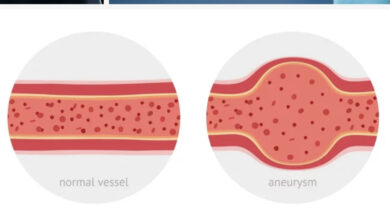A TIA REALLY IS A “MINI STROKE!”

“Mini-stroke” is the lay term used for decades to describe a brief neurologic event. We remember the time grandma suddenly had slurred speech, or was unable to see, or couldn’t use her left arm, and we thought she was having a stroke. It scared us to death, but an hour or two later, it was gone. She could talk, see and move normally again. The ER doctor said she had a “TIA,” or a mini-stroke. The medical term for this event is Transient Ischemic Attack (TIA). The doctor said a lack of circulation to part of grandma’s brain had caused the symptoms, but now, since everything had cleared up, she was ok. Now that she’s back to normal, it appears no permanent brain damage occurred, but she’ll need to be evaluated to prevent it from happening again.
TIA’s are common occurrences in the elderly. They are thought to be caused by a temporary interruption of blood flow, and therefore, oxygen, to a part of the brain. The neurologic symptoms this causes usually last at least 10-15 minutes but less than 24 hours and are not associated with brain injury. A stroke, on the other hand, leaves permanent neurologic damage because the brain is injured. The brain injury is called a cerebral infarction. Lack of blood flow permanently damages the brain tissue. Thus, with a stroke there is brain injury, and with a TIA there is not. That was the theory until recently.
CT and MRI imaging techniques have advanced in precision to the point that now doctors are able to see damage to the brain (infarcts) after a TIA. “If the brain is imaged after an ischemic event (lack of blood oxygen), some infarcts may be visible. If the same brain is imaged with MRI… more infarcts may be apparent.” That means that many patients after a TIA, even though their symptoms disappeared, truly had a brain injury—an infarct. “It is likely that the [majority] of those events defined as TIA….are associated with [permanent] cerebral (brain)tissue injury…”
What this means is that doctors are now able to determine that many “mini strokes” are in reality true strokes with injury (infarction) of the brain tissue, and that these “symptomatic focal cerebral ischemic events should be considered to be cerebral infarctions. They may be minor, moderate, severe, or fatal, and may or may not be detected…using modern imaging techniques.” But the fact that many events previously thought to be without brain injury are, indeed, associated with brain injury, means the term “mini stroke” is accurate. TIA’s then fall into the “minor” stroke category and should be called “minor ischemic strokes,” and not considered a benign event.
This information now places the TIA patient in an even higher risk stratum than previously. The chance of future events is high so risk factors must be identified and preventive treatment begun. I saw a lot of folks with mini strokes who had no residual effects who I naively told were fortunate they didn’t have a stroke. Now I know that in a large number of them, they really did have a stroke.
The author of the article I used as reference for this blog felt strongly the term TIA should be “retired” and replaced by “Acute ischemic cerebrovascular syndrome.” We’ll see if that change occurs. Knowing what we now know, though, it makes sense.
Reference: Easton JD, Johnston C. Time to Retire the Concept of Transient Ischemic Attack JAMA Online 2022 Feb11;





Great articles as usual Doc. I enjoy reading all of them. Go Hoosiers!
Amen, Bob.